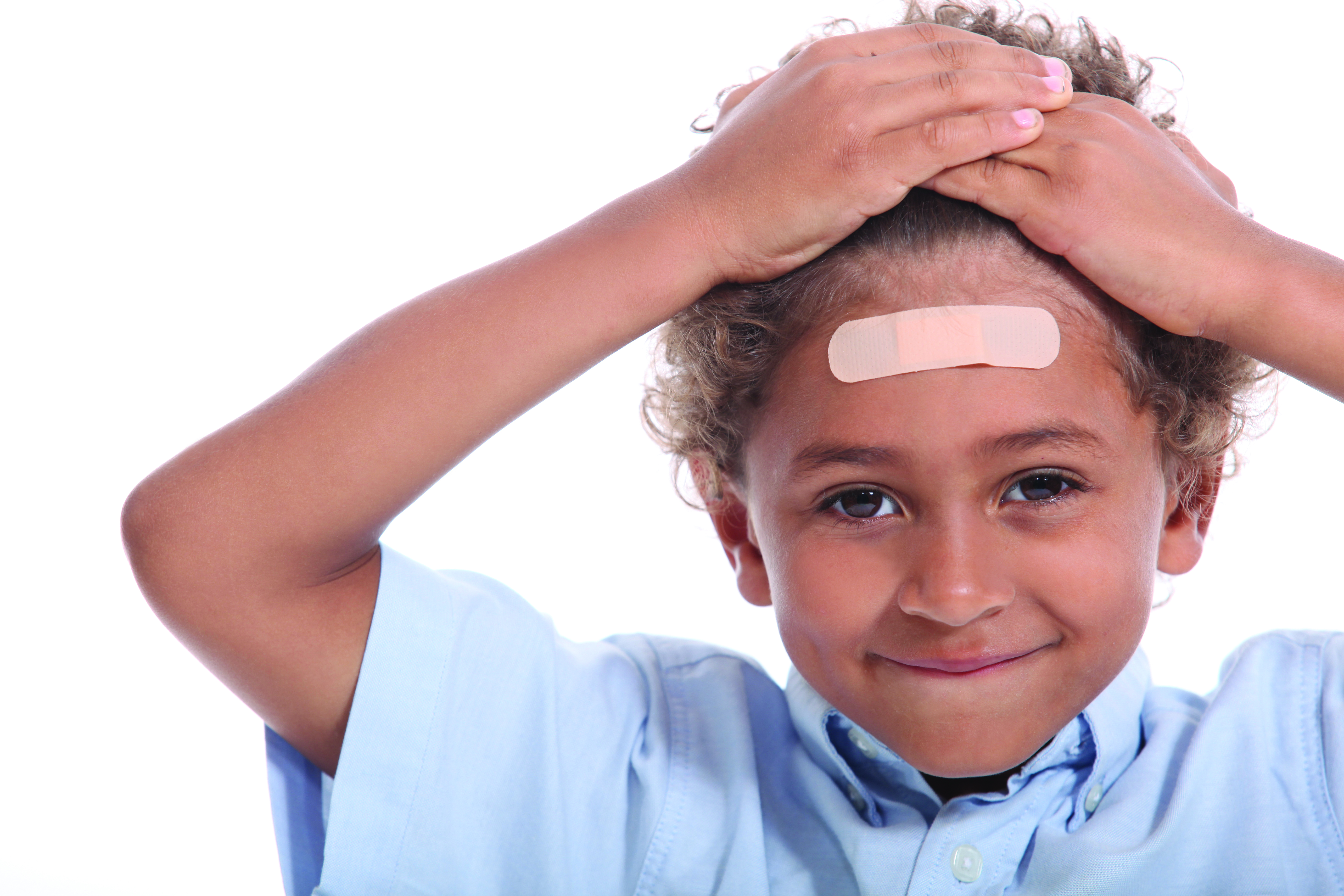It’s finally summertime and the kids are outside biking, hiking, swimming, at the playground, and playing sports. With these activities can sometimes bring the unpleasant bumps, bruises, cuts, scrapes, and head injuries. Some of these injuries can seem pretty scary as a parent. Knowing how to appropriately treat them and when to call the doctor can provide you with much needed comfort.
Bumps/Goose Eggs (Hematomas) and Bruises (Contusions)
- What is a goose egg? A collection of blood and tissue fluids that pools under the skin that leaks out of damaged blood vessels following an injury.
- What are bruises? A collection of blood under the skin that leaks out of damaged blood vessels following an injury.
- How do I treat them?
- Cold/Ice compresses x 20 minutes (if tolerated)
- Kid friendly cloth covered ice gel pack
- Frozen peas
- Frozen rice filled cloth pack
- Ice cubes in plastic bag (thin cloth between ice and skin)
- More than 48 hours: Warm washcloth x 10 minutes 3x/day to help resorb the blood
- Over the counter (OTC) pain medications: Ibuprofen or Acetaminophen
- Homeopathic Arnica topically and orally
- Calendula cream/ointment topically
- Vitamin C orally
- Bioflavonoids
- Foods: Strawberries, blackberries, blueberries, raspberries, cherries, grapes, squash, carrots, yams, beets, red bell peppers, spinach, broccoli, citrus fruits
- Supplement
- Witch hazel topically
- Comfrey ointment, cream or gel topically
- Cold/Ice compresses x 20 minutes (if tolerated)
Cuts and Scrapes
- How do I treat them?
- Apply direct pressure to wound for 10 minutes with a sterile gauze or cloth to stop any bleeding.
- Wash the wound with soap and water for 5 minutes. If there is any dirt or debris in the wound, scrub gently to remove. Do NOT wash wound out if severe cut that needs stitches, bring to Emergency Department for treatment immediately.
- If cut is on arms or legs, elevate extremity to reduce bleeding.
- Hydrogen peroxide: to irrigate and clean the wound
- OTC topical antibiotic ointment 2x/day
- Keep wound covered with dressing and change daily until it begins to heal. This protects wound from getting infection.
- When to Call Your Doctor
- Tetanus vaccine is not up to date OR unvaccinated child
- Not able to control bleeding after 10 minutes of direct pressure
- Cut is very deep (can see muscle, bone, or tendons)
- Dirt unable to be removed from wound (may need irrigation in doctor’s office)
- Skin is split open or gaping (may need stitches)
- Signs of infection (redness, red streaks, fever, pus/discharge, very painful)
- Doesn’t heal within 10 days
Head Injuries
- Types
- Scalp Trauma: Cuts, scrapes, bruises, hematomas. This area of the body has a very rich blood supply. Thus, injuries to this area will cause increased bleeding.
- Skull trauma: bruises and fractures.
- Concussion
- Brain trauma
- Call 911 immediately If:
- Loss of consciousness for more than 1 minute
- Appears confused, drowsy
- Crossed eyes, unequal pupils
- Clear fluids draining from nose, mouth, or ears
- Seizure
- Unable to move limbs
- Off balance while sitting, crawling, or walking
- Severe headache
- Slurred speech
- Not moving neck
- Uncontrolled bleeding
- Call Doctor immediately If:
- Loss of consciousness for more than 1 minute
- Blurred vision
- Skin is open or gaping
- Large swelling greater than 2 inches (age less than 12 mos: greater than 1 inch)
- Age less than3 mos.
- Age less than 24 mos. With fussiness or continued crying
- Vomiting more than 3 times
- At Home Treatment:
- Observation x 48 hours
- Monitor for all of the aforementioned symptoms
- Encourage child to lie down and rest until symptoms have cleared (mild headache, mild dizziness, and nausea are common).
- Allow child to sleep if they want to but be nearby to monitor every couple of hours.
- Awaken child after 2 hours of sleep to check their ability to walk and talk.
- Offer clear fluids in the 2 hours following injury in case of vomiting.
- Avoid pain medications during the 1st couple of hours after injury to monitor for headache severity.
- Night-time
- Awaken child every 4 hours x 2 nights and check ability to walk and talk. Sleep in same room.
- Expected Course
- Most head injuries only cause scalp injury.
- Swelling can take a week to resolve.
- Local headache at site of injury usually resolves in 2-3 days.
- Observation x 48 hours
Injury prevention should be implemented first and foremost. Tetanus vaccination should be up to date. Make sure a first aid kit is easily accessible during emergency situations. Always make sure your child is wearing the appropriate and correctly fitted protective gear for their sports. Helmets, pads, and reflective clothing should be worn while biking. Adult supervision is an absolute must when around bathtubs, swimming pools, and any body of water.
By implementing these preventative measures, knowing how to treat injuries if they happen, and knowing when to call your doctor, you will be able to feel some comfort while your little ones are enjoying the outdoors this summer.
Dr. Robin Russell is a Naturopathic Doctor specializing in Pediatrics and Women’s Health. She is the owner as well as a Physician at Natural Pediatric Medicine, LLC in Canaan, CT. Dr. Russell is also an Adjunct Faculty member at the University of Bridgeport in their Masters of Nutrition program. She is a board member of the Connecticut Naturopathic Physicians Association as well as a member of the Pediatric Association of Naturopathic Physicians. Dr. Russell graduated from Bastyr University in 2005 and opened her practice in the Seattle area later that same year. After practicing Primary Care in WA for almost 8 years, Dr. Russell and her husband decided to return to CT to raise their children near family.
